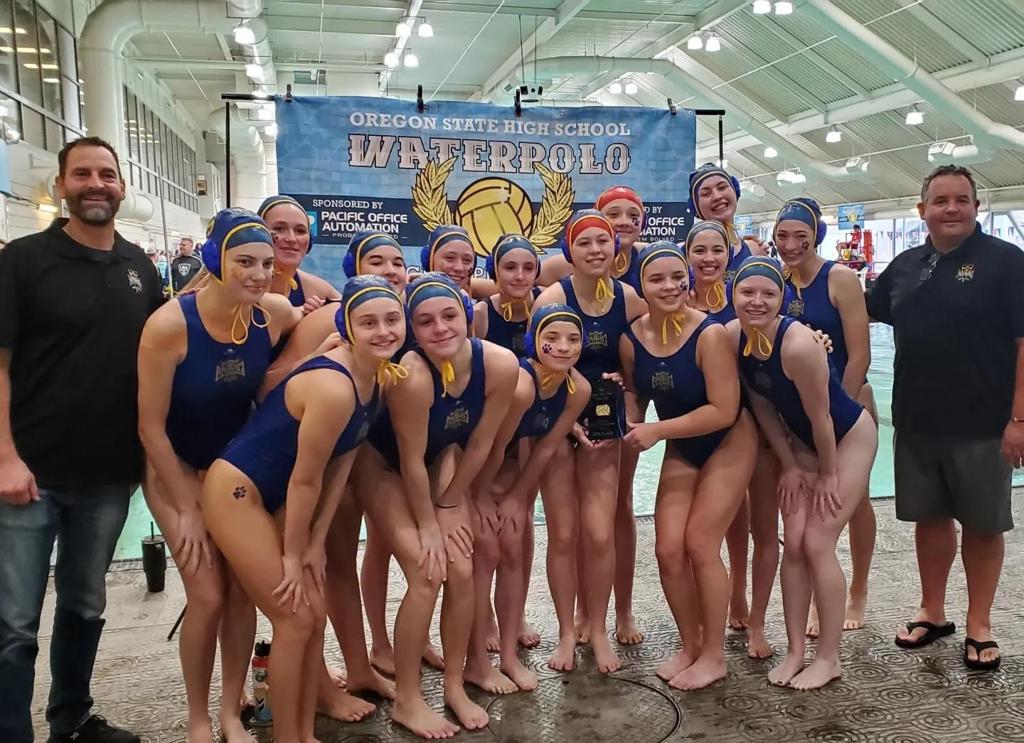Technology
Pro softball is building momentum in U.S.
Matt Roper repeats a common phrase throughout the various spaces of the NASCAR production facility: crawl, walk, run. It’s an easy saying to rattle off that’s much harder in practice, but it’s one NASCAR has acted out again and again in the $53-million beating heart of all its live coverage and content production. Roper, NASCAR’s […]
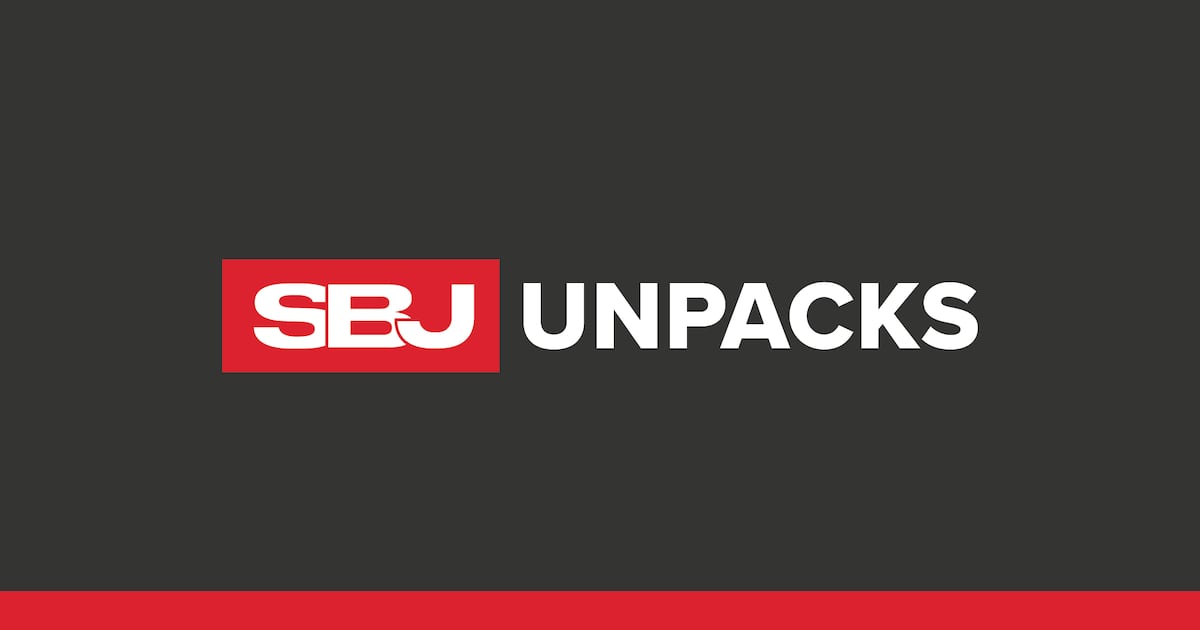
Matt Roper repeats a common phrase throughout the various spaces of the NASCAR production facility: crawl, walk, run.
It’s an easy saying to rattle off that’s much harder in practice, but it’s one NASCAR has acted out again and again in the $53-million beating heart of all its live coverage and content production.
Roper, NASCAR’s managing director/production operations, has been around stock car racing for 20 seasons, seeing an astonishing amount of growth over that time. But the still-new facility, just over a year old, is a dramatic gearshift up in capabilities even as its expansion continues.
“We will get more out of that approach,” Roper told me of his go-to saying just outside of a control room humming before race time. “If you have a really big idea, you can always execute that big idea, but there are steps you need to take to make sure that it’s going to go off the way it should. So that’s what we’ve tried to do.”
I spent a few hours at the Concord, N.C.-based hub last Saturday to see it in action for the CW’s broadcast of the Xfinity Series from Rockingham Speedway. Here’s a look at the tech supporting it all, the CW’s fresh perspective on motorsports, and the horsepower boost (OK, the driving wordplay is getting out of hand) that has come to NASCAR as its production hub adds more working spaces.
The technology creating the multiple time zone pathways
My first connection of the day was with Mike Zylak, NASCAR’s senior director/engineering, who in a few hundred steps helped me realize the impact of the collective spaces. We zipped around various control rooms, production spaces and studio sets that create components of the viewing and listening experiences for NASCAR fans everywhere.
For example, Saturday alone featured planned coverage in different phases:
- The ARCA Menards Series East race at Rockingham Speedway was rolling.
- The CW’s broadcast of the Xfinity race was approaching its takeoff.
- And later that night, the season opener was on deck for NASCAR’s longest running weekly racetrack, Bowman Gray Stadium — in my hometown of Winston-Salem, N.C.
All races can be handled remotely now thanks to crucial connections between the hub, NASCAR’s production data center in Dallas and whichever track is hosting competition.
NASCAR relies on a 100 GB WAN (wide area network) connection between Concord and the Lone Star State, a speed crucial to match the demands of real-time coverage. That setup is unique, Zylak pointed out, because it means that broadcast switcher panels and audio consoles are in N.C., while the various frames they connect to are a time zone away.
The facility has provided great flexibility in how races can be covered and what combination of skill sets can be hosted in either Concord or on-site. “Now we have different ways of putting people in different places,” Zylak said.
We then dipped into the international packaging room, where live coverage, recaps and highlights are built for fans worldwide. After a few minutes, Roper joined us.
The facility opened ahead of the 2024 season, with the move-in process happening in October 2023. Both said that the learning process for workflow — between NASCAR’s own moving parts in various locations and the cluster of broadcast partners (Fox Sports, NBC Sports, Amazon Prime and Warner Bros. Discovery are part of media rights package for its top three series) — is yielding production dividends now.
“Discovering how much time we actually need to test everything out with every group, rather than just from point A to point B,” Zylak reflected when asked about the growth prompted by the hub. “The schedules for testing and facsimile are very detailed, and they’re very well organized because one thing breaks and it puts you down for 20 minutes trying to test something — one person can’t just figure it out.”
The CW behind the wheel
Adam Alexander sat in prep for his upcoming call as I sidled up to him. The lead announcer of the CW’s Xfinity Series coverage — a three-man crew with Jamie McMurray and Parker Kligerman — hit me with the same infectious personality he broadcasts every week to the folks who tune in.
This being the CW’s first season in NASCAR — part of a seven-year deal between the network and the racing governing body and a tentpole of the CW’s sports push — Alexander described a compatible sync up in covering the races: “The energy and the excitement that the CW folks brought to the table, and then the open-minded vision that the NASCAR production side had to say, ‘Hey, this is kind of what we want to create, and what are ideas you have?’”
Zylak shared a similar sentiment earlier that day, saying that the CW has been adaptable to NASCAR’s suggestions and ideas. But the network also found ways to bring its own signature to it — like the graphics package with horizontal bumper that Zylak said fans have responded to.
The CW will call a handful of races from the NASCAR production hub this Xfinity season, and the setup provides some boosts to the talent experience. For starters, Alexander’s remote broadcast space gives him access to more vantage points from camera feeds. It’s typically much harder to see what’s going on at all times in person at a racetrack, due to a venue’s size and/or shape. Another positive is the multi-seat desk, allowing for a more conversational setting where Alexander, McMurray and Kligerman can face one another. On-site, they’d be side-by-side, like on a bench, all facing the action.
Experience with remote calls helps, too — Alexander has done so for the Craftsman Truck Series, as well as for some football and basketball games — but ultimately, the CW three-man crew has tinkered to find a setup that works for them in these off-site opportunities.
“It took a little time for us to figure out what’s the best configuration in here,” Alexander said. “Everybody wants something a little different: Where do you want your monitors, or what’s the best way for us to communicate, or do you need to be sitting close to each other? … We’ve found all that, and we’re in a good spot.”
The growth continues
Just outside the main control room for the Xfinity race, Roper again highlighted the potential for increased everything in the sprawling facility: people, spaces and possibilities.
The hub recently saw its mixed-reality facility — Studio 43, a nod to NASCAR’s racing king, Richard Petty — open five weeks ago. Roper said in that new space, which was designed in collaboration with Provost Studio, the only limitation is imagination.
A quick aside on this: I saw that studio with Zylak and was blown away by the details in the digital background. I’m always skeptical of how an XR setup looks for viewers as they watch from their various screens (and more than likely gets flattened in the process). I saw this studio on various control room screens during my visit, and this one delivers an incredible depth that provides the look of a garage-type setup in the CW’s orange-and-black theme.
A second studio is about to open too, and it’s more of a typical desk (think your local news host, seated and facing the camera) in a room covered with LEDs. A pad on the wall allows for a quick pivot in color and presentation. “Depending on the different clients that come in, they’ll do tons of different types of things in here,” Zylak said.
Plans are in place to add three or four more control rooms by the end of the year. They will help NASCAR staff capture more races for smaller divisions (archiving content for the future stars of tomorrow) and boost their overall production value even more.
As new spaces of the NASCAR production facility have come online, it has led to more jobs. Zylak has seen the staff he manages steadily grow from four people to 14 by the end of next month. “The field got a little bit bigger when we took over the Xfinity series — there’s a little more going on out there for us,” Zylak said. “We had to plant some more people in this building.”
With the Rockingham start looming, Roper made his last “crawl, walk, run” reference of the day with me before moving to his seat in the control room. That guiding approach to this facility has continued to expand its capabilities. His team workshopped and learned around every addition, and that methodical approach will continue to serve his crew well as the expansion evolves.
“We’ve just been constantly growing, and it doesn’t show any signs of slowing down,” Roper said.
Technology
Reshaping the Sporting Goods Market via Smart Technologies
As innovative technologies redefine the sporting goods industry, companies that hesitate risk falling behind more agile, digitally empowered competitors. In the sporting goods industry, innovation is the battleground where brands win or lose. Consumers demand more innovative, personalized, and sustainable products, pushing manufacturers to rethink every stage of the product lifecycle. How can this be […]
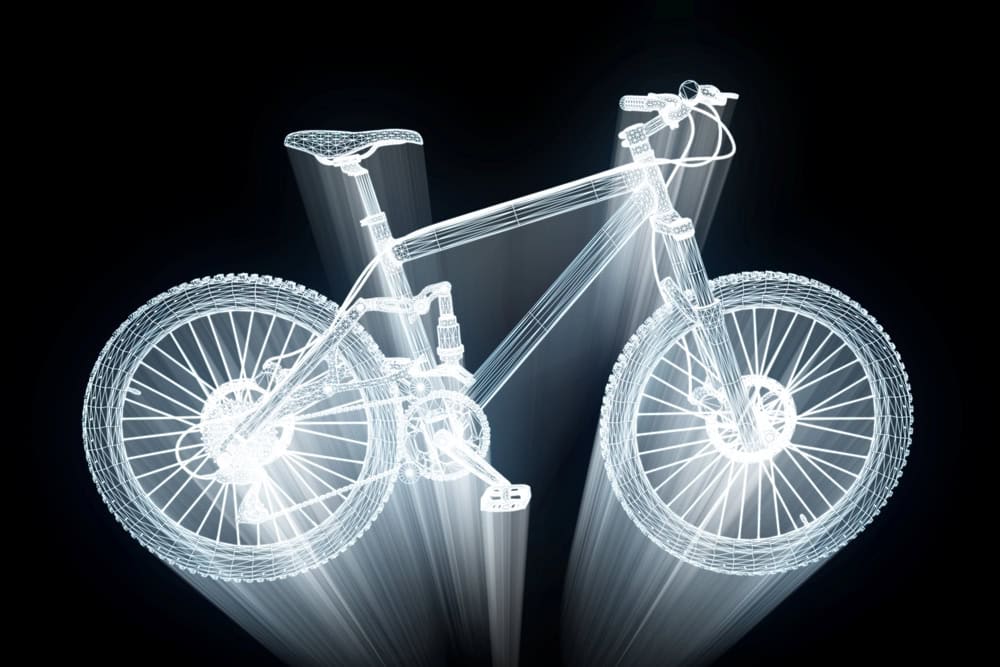


As innovative technologies redefine the sporting goods industry, companies that hesitate risk falling behind more agile, digitally empowered competitors.
In the sporting goods industry, innovation is the battleground where brands win or lose. Consumers demand more innovative, personalized, and sustainable products, pushing manufacturers to rethink every stage of the product lifecycle.
How can this be achieved? The answer lies in a digital transformation fueled by innovative technologies, including simulation, IoT, and AI-driven analytics. These forces are enhancing product design and manufacturing. And they are fundamentally reshaping how brands connect with their customers and compete in a rapidly evolving market. In this new era, those who embrace intelligence, flexibility, and sustainability will define the future of sports.
At the forefront of this transformation is the need for tools and platforms that enable manufacturers to integrate intelligence, flexibility, and sustainability into their operations. From real-time performance insights delivered by smart-enabled gear to digital twins optimizing product design, sporting goods brands leverage these technologies to remain agile, innovative, and competitive.
The Digital Shift in Sporting Goods Manufacturing
A convergence of forces is reshaping the sporting goods industry. Consumers are no longer satisfied with one-size-fits-all products—they expect equipment tailored to their unique body mechanics and goals. They want data-driven feedback to optimize their performance and demand sustainability in how gear is made and disposed of. Meanwhile, innovation is accelerating, and product cycles are getting shorter. To meet these evolving demands, manufacturers must move faster, smarter, and more collaboratively than ever before.
Digital transformation is enabling this shift. With integrated tools that connect the dots from design and prototyping to production and post-sale insights, companies are gaining the agility and intelligence needed to deliver high-quality, customized products at scale. Success depends on how well cross-functional teams—designers, engineers, data analysts, and marketers—can collaborate on unified digital platforms to create next-generation gear.
See also: How Digital Twins and Real Time Data Accelerates Time to Value
Smart-Enabled Equipment: Merging Physical and Digital
Smart-enabled sports gear is one of the most visible outcomes of this transformation. These products include connected bicycles, smart tennis racquets, wearable motion sensors, and fitness wear. Embedded IoT sensors provide real-time data about the equipment’s use.
For athletes, this means on-demand feedback that helps refine performance and prevent injury. For manufacturers, the value is equally profound: sensor data provides unprecedented visibility into product usage, revealing insights that can inform design improvements, enable predictive maintenance, and even open the door to new service-based revenue models.
Take, for example, a company producing smart cycling gear. Integrating sensors into helmets and bikes can track rider posture, acceleration, and braking patterns. This data improves rider safety and training routines and gives engineers a feedback loop, leading to better designs in future iterations. It’s a win-win that turns physical products into dynamic, data-driven ecosystems.
Simulation and Digital Twins: Revolutionizing Product Design
Designing high-performance sports gear has always involved a balance of art and science. But today, that balance is tilting firmly toward science—thanks to simulation and digital twin technology. A digital twin is a virtual model of a physical product that can simulate its performance under real-world conditions. That allows engineers to explore countless design scenarios before building a single prototype.
Using simulation and digital twins, manufacturers can now simulate stresses on a bicycle frame, the aerodynamics of a ski helmet, or the cushioning effect of a new running shoe sole—all in a digital environment. These insights help teams fine-tune products faster and more accurately while reducing the need for costly physical prototypes.
For example, imagine a manufacturer developing a new lightweight trail-running shoe. By creating a digital twin, they can simulate different sole compositions, test for durability, and model how the shoe will respond to various terrains and gait patterns. The result? A shoe that performs better and gets to market faster with fewer iterations and less waste.
AI-Driven Analytics: Turning Data into Competitive Advantage
Data is the new gold—and AI is the pickaxe. With the vast amount of performance and product usage data generated by smart gear, AI and machine learning are becoming essential tools for making sense of everything. These technologies enable predictive analytics that drive innovation across R&D, quality assurance, supply chain management, and customer engagement.
In R&D, AI can identify which design features correlate with optimal performance, guiding product innovation. In production, predictive maintenance algorithms can reduce downtime and ensure consistent quality. On the consumer side, AI-powered platforms can offer personalized recommendations—such as which type of shoe best suits an individual’s running style or when it’s time to replace their gear.
These insights also enable entirely new business models. Brands can offer subscription services for equipment upgrades, provide usage-based warranties, or launch coaching apps that integrate with smart gear. By turning raw data into actionable intelligence, companies aren’t just improving products; they’re redefining their relationship with the customer.
Staying Competitive: The Role of Integrated Digital Platforms
As digital transformation accelerates, manufacturers need more than just individual tools. They need cohesive, connected platforms that span the full product lifecycle.
There are many solutions on the market. When companies look for help, one differentiator is finding proven solutions backed by a technology partner with consumer product manufacturing expertise. Those are all areas where Siemens can help.
The Siemens Solid Edge suite empowers teams to design, simulate, and optimize products in a unified environment, enabling faster development, tighter collaboration, and smarter decision-making.
Integrated platforms break down traditional silos between departments. Designers can collaborate in real time with engineers. Marketing teams can leverage product data to refine messaging. Supply chain managers can anticipate demand spikes based on usage trends. The result is a more responsive, innovative organization built to thrive in a fast-moving, tech-driven market.
Manufacturers of consumer sporting goods use Siemens Solid Edge to gain access to a suite of tools that streamline the entire product development process. Some of the main features and benefits of using the solution include:
- Advanced 3D CAD for product design
- Integrated simulation and analysis
- Generative design and topology optimization
- Data management and collaboration
- Integration with additive manufacturing and CAM
- Rendering and visualization
- Support for IoT and Digital Twins.
Solid Edge enhances collaboration by unifying design, validation, and production planning in such a single platform and ensures a smoother transition from concept to finished product. That is particularly important in today’s marketplace, where there is a growing complexity of products. For example, Rotor Bike Components found that by leveraging Siemens NX CAD/CAM/CAE software for design and simulation, they realized a 15% faster implementation of design changes and a 15% reduction in routine tasks and time to market.
How does that help? Speed to market is critical in the consumer product space because customer preferences shift rapidly, and being first to the market can secure brand loyalty and competitive advantage. Short product life cycles mean delayed launches risk missing seasonal trends or being outpaced by competitors. Additionally, faster time-to-market allows companies to respond quickly to feedback, iterate designs, and capture revenue opportunities sooner.
Conclusion: A New Era for Sporting Goods
The race to innovate has never been more intense, and the window to lead is rapidly narrowing. As innovative technologies redefine the sporting goods industry, companies that hesitate risk falling behind more agile, digitally empowered competitors. Now is the time to rethink your product development strategies, embrace data-driven insights, and build smarter, more sustainable gear that meets the demands of today’s athletes.
Siemens is ready to help you seize this moment. With solutions like the Solid Edge portfolio, Siemens empowers sporting goods manufacturers to design faster, innovate smarter, and deliver world-class products that will shape the future of sports. The next era of excellence is here. Make sure you’re leading it.
Technology
Microsoft and Meta Platforms lead Wall Street higher Thursday | News, Sports, Jobs
NEW YORK (AP) — Microsoft and Meta Platforms led Wall Street higher Thursday after the Big Tech companies reported profits for the start of the year that were even bigger than analysts expected. The S&P 500 rose 0.6% for an eighth straight gain, its longest winning streak since August. The Dow Jones Industrial Average added […]

NEW YORK (AP) — Microsoft and Meta Platforms led Wall Street higher Thursday after the Big Tech companies reported profits for the start of the year that were even bigger than analysts expected.
The S&P 500 rose 0.6% for an eighth straight gain, its longest winning streak since August. The Dow Jones Industrial Average added 83 points, or 0.2%, and the Nasdaq composite climbed 1.5%.
Microsoft rallied 7.6% after the software giant said strength in its cloud computing and artificial intelligence businesses drove its overall revenue up 13% from a year earlier.
Meta, the parent company of Facebook and Instagram, also topped analysts’ targets for revenue and profit in the latest quarter. It said AI tools helped boost its advertising revenue, and its stock climbed 4.2%.
They’re two of the most influential stocks within the S&P 500 and other indexes because of their massive sizes, and they weren’t alone. CVS Health, Carrier Global and a bevy of other companies also joined the stream of better-than-expected profit reports that have helped steady Wall Street over the last week. The S&P 500 is back to within 9% of its record set earlier this year, after briefly dropping nearly 20% below the mark.
Still, plenty of uncertainty remains about whether President Donald Trump’s trade war will force the economy into a recession. Even though companies have been reporting better profits for the first three months of the year than analysts expected, many CEOs are remaining cautious about the rest of the year.
Technology
How Snapdragon became a household name with sports fans
When tech company Qualcomm and its product brand Snapdragon inked a deal with Manchester United in 2022, CMO Don McGuire never imagined the Snapdragon name would end up plastered on the Premier League team’s kits. Similarly, when Qualcomm first got involved with Formula 1 the same year, there were no plans to partner with Mercedes, […]
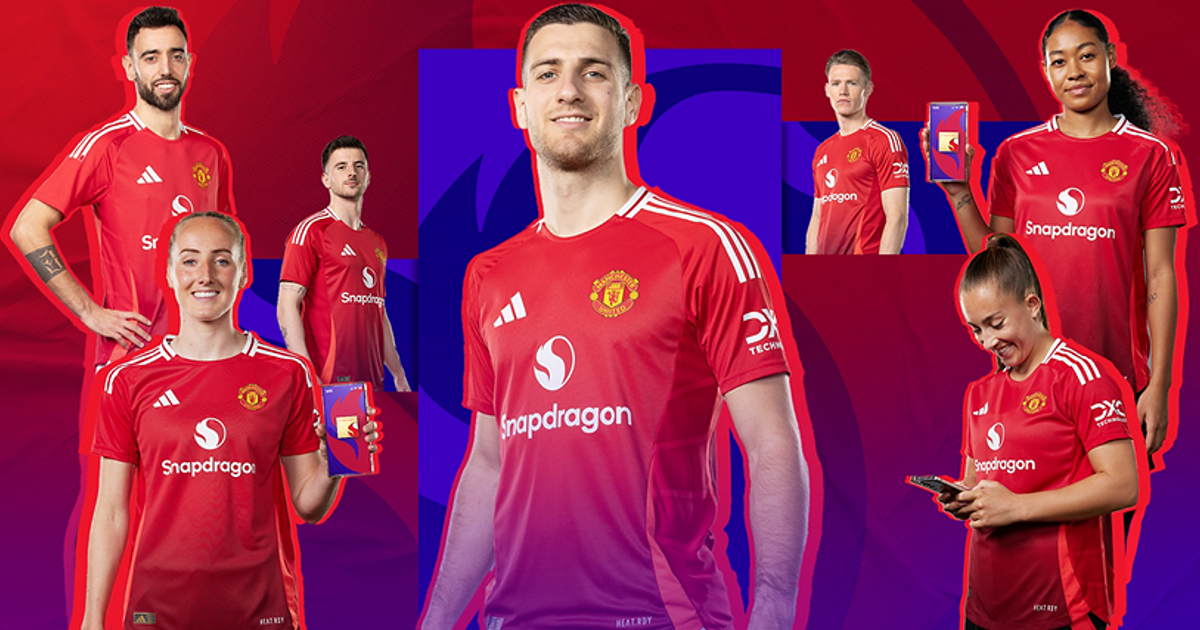
When tech company Qualcomm and its product brand Snapdragon inked a deal with Manchester United in 2022, CMO Don McGuire never imagined the Snapdragon name would end up plastered on the Premier League team’s kits.
Similarly, when Qualcomm first got involved with Formula 1 the same year, there were no plans to partner with Mercedes, which, despite some difficulties in recent years, is still firmly in the top half of the grid. And a year before that, when the company signed its 15-year naming rights deal for a stadium complex in San Diego in 2021, the facility was primarily expected to host college football games; now, two professional soccer teams call it home, too.
Over the last few years, McGuire and Qualcomm have pivoted to take advantage of opportunities in sports sponsorships as they present themselves, and rolled with the changes. After a little bit of convincing of the rest of the C-suite, sponsorships, McGuire told us, have become Snapdragon’s single biggest driver of brand growth, more than traditional ad spend.
“As we saw relevance with consumers of our technology and we built our brand story, we had to look at our marketing mix, how we build more affinity for the brand, and how we do more storytelling,” he said.
The reverse Hamilton
Qualcomm originally got involved in F1 with the Ferrari team, not Mercedes. At the time of the deal, Qualcomm had a business relationship with Ferrari outside of F1, along with several other auto brands, and McGuire said it made sense to test out an F1 sponsorship with a one-year deal. The fact that both brands’ primary color is red didn’t hurt, either, he added.
The partnership was announced at the start of the 2022 F1 season in February, and by the time the Italian Grand Prix in Monza rolled around in September, some hospitality hiccups involving understaffing and ticket issues had McGuire feeling frustrated about the deal, he said.
At the Abu Dhabi Grand Prix toward the end of the season, Qualcomm’s Ferrari paddock passes fell through again, and Mercedes hooked the brand up with access to its paddock instead. That offer “sealed the deal,” McGuire said, and Qualcomm moved from Ferrari to Mercedes—a year before F1 all-star Lewis Hamilton announced he was leaving Mercedes to join Ferrari after more than a decade. (A representative for Ferrari did not return a request for comment.)
For the past few seasons, Qualcomm has had a significant presence with the team, showing up on its cars, race suits, personnel clothing, and social media, as well as partnering with its drivers and activating at races. Last summer, Qualcomm expanded its partnership with Mercedes to include driver Doriane Pin and F1 Academy, the women’s F1 championship. So far, the sponsorship has helped Qualcomm add to its membership community of “Snapdragon Insiders,” show off its tech to F1 fans in person, and meet other business partners like WhatsApp and Marriott, McGuire said.
Get marketing news you’ll actually want to read
Marketing Brew informs marketing pros of the latest on brand strategy, social media, and ad tech via our weekday newsletter, virtual events, marketing conferences, and digital guides.
The two organizations will discuss renewing their deal in 2026, he said, and while Qualcomm is “always evaluating” the sponsorship market to vet its contracts within the context of the rest of the landscape, McGuire said he’s excited for Mercedes’s future on the track and has been pleased with the relationship.
Dragon  devil
devil
Qualcomm also experienced something of an unexpected changeup with regard to its Manchester United partnership. McGuire said that about a year into the original deal, the team approached him with the opportunity to become its front-of-shirt sponsor—which would be a huge sponsorship step up for the brand.
“I was like, ‘Wow, I’m flattered, but there’s no effing way I’m gonna be able to get this over the finish line,’” McGuire said. “We’ve never done anything this big…I would love to have the Snapdragon brand on one of the most coveted pieces of sports real estate in the world, but man, I’m thinking [there’s a] 5% chance this is going to happen.”
After some persistence, and about a year spent working on making the case for the deal with the Red Devils, McGuire said he sold the rest of the C-suite on the idea, which he said primarily came down to the deal’s equivalent media value.
“Being the front-of-shirt partner with Manchester United and having 24 home matches a year for the men’s team alone is like getting the equivalent of 24 Super Bowl ads,” McGuire said. “It’s been the biggest move we’ve made to position Snapdragon into the zeitgeist to a broad audience.”
Sure enough, Qualcomm saw more than 5 billion impressions during its first season on Man United’s kits alone, along with the addition of hundreds of thousands of new additions to its Snapdragon Insiders community, according to McGuire. Last year, the two organizations extended their deal until 2029.
“It’s been pretty life-changing for the brand,” he said. “The KPIs have been phenomenal.”
Hometown heroes
Elsewhere in the world of soccer, Qualcomm found itself involved with San Diego FC, which started playing in MLS as the league’s 30th club this season, and San Diego Wave FC, which joined the NWSL in 2022; both teams play at Snapdragon Stadium. To round out its local sponsorship portfolio, Qualcomm is also a partner of the San Diego Padres MLB team.
While Mercedes and Man United largely serve top-of-funnel goals like brand awareness, the local team efforts are more about “lower-level KPIs like mentions across media” and connecting with the San Diego community, McGuire said. In addition to tens of thousands of media mentions, the stadium has earned Snapdragon global broadcast exposure thanks to international matches and tournaments, like the upcoming Concacaf Gold Cup, according to McGuire.
“This area of brand partnerships and this area of community are really two very fertile areas for us that are driving brand growth overall, and that paid off, from an ROI perspective, tremendously,” he said.
Technology
Registration now open for 12 June event in Barcelona
Registration is now open for the first Sports Production Innovation Summit, taking place at GRUP MEDIAPRO’s Imagina Centre Audiovisual in Barcelona on 12 June. The summit will explore cutting-edge advancements in sports production, focusing on the latest innovations in AI-driven production, cloud-based workflows, cost-effective content creation and the future of centralised and remote production. After […]


Registration is now open for the first Sports Production Innovation Summit, taking place at GRUP MEDIAPRO’s Imagina Centre Audiovisual in Barcelona on 12 June.
The summit will explore cutting-edge advancements in sports production, focusing on the latest innovations in AI-driven production, cloud-based workflows, cost-effective content creation and the future of centralised and remote production.
After an opening panel assessing the state of the European sports production industry, sessions will explore topics including sustainability in sports production, innovation in new and challenger sports, esports’ influence on production, and how AI-driven enhancements are impacting live sports production. Sessions will be in a mixture of English and Spanish – a translation service will be available.
To find out more and to register, visit www.svgeurope.org/sports-production-innovation-summit-2025.
Technology
Microsoft and Meta Platforms lead Wall St. higher | News, Sports, Jobs
NEW YORK — Microsoft and Meta Platforms led Wall Street higher Thursday after the Big Tech companies reported profits for the start of the year that were even bigger than analysts expected. The S&P 500 rose 0.6% for an eighth straight gain, its longest winning streak since August. The Dow Jones Industrial Average added 83 […]

NEW YORK — Microsoft and Meta Platforms led Wall Street higher Thursday after the Big Tech companies reported profits for the start of the year that were even bigger than analysts expected.
The S&P 500 rose 0.6% for an eighth straight gain, its longest winning streak since August. The Dow Jones Industrial Average added 83 points, or 0.2%, and the Nasdaq composite climbed 1.5%.
Microsoft rallied 7.6% after the software giant said strength in its cloud computing and artificial intelligence businesses drove its overall revenue up 13% from a year earlier.
Meta, the parent company of Facebook and Instagram, also topped analysts’ targets for revenue and profit in the latest quarter. It said AI tools helped boost its advertising revenue, and its stock climbed 4.2%.
They’re two of the most influential stocks within the S&P 500 and other indexes because of their massive sizes, and they weren’t alone. CVS Health, Carrier Global and a bevy of other companies also joined the stream of better-than-expected profit reports that have helped steady Wall Street over the last week. The S&P 500 is back to within 9% of its record set earlier this year, after briefly dropping nearly 20% below the mark.
Still, plenty of uncertainty remains about whether President Donald Trump’s trade war will force the economy into a recession. Even though companies have been reporting better profits for the first three months of the year than analysts expected, many CEOs are remaining cautious about the rest of the year.
General Motors cut its forecast for profit in 2025, for example. It said it’s assuming it will feel a hit of $4 billion to $5 billion because of tariffs, and it expects to offset at least 30% of it. GM’s stock slipped 0.4%.
McDonald’s fell 1.9% after reporting weaker revenue for the latest quarter than analysts expected, even though its profit was slightly above forecasts. An important measure of performance at its U.S. restaurants had its worst decline since 2020, when COVID shuttered the global economy, and McDonald’s CEO Chris Kempczinski said consumers “are grappling with uncertainty.”
McDonald’s joined Chipotle and other restaurant chains that have seen customers get more cautious amid all the unknowns about the economy and inflation that’s still higher than many would like.
The uncertainty has already shown up in surveys of consumers, which say pessimism is shooting higher about where the economy heading. On Thursday, a couple reports about the economy came in mixed, following up on several recent updates that suggested it’s weakening.
The first of the reports said more U.S. workers filed for unemployment benefits last week than economists had forecast, setting the stage for a more comprehensive report on the job market arriving today.
But a later update said U.S. manufacturing activity was better last month than economists had feared, though it still contracted again.
The fear on Wall Street is for a possible worst-case scenario called “stagflation,” where the economy stagnates yet inflation remains high. The Federal Reserve has no good tools to fix both such problems at the same time. If the Fed were to try to help one problem by adjusting interest rates, it would likely make the other worse.
Some encouraging news on inflation arrived Wednesday, when a report said that the measure of inflation the Fed likes to use slowed in March.
In the bond market, Treasury yields swiveled following Thursday’s economic reports. The yield on the 10-year Treasury initially fell below 4.13% after the worse-than-expected update on joblessness. But it later trimmed its losses following the better-than-expected report on manufacturing and rallied to 4.21%. That’s up from 4.17% late Wednesday.
Technology
Rory McIlroy and Investment Giant TPG Team Up for Sports Venture
Fresh off finally securing a career grand slam with a thrilling win at the Masters, Rory McIlroy, the world’s second-ranked golfer, is rounding out another corner of his life: investing. Mr. McIlroy’s investment firm, Symphony Ventures, is teaming up with the private equity firm TPG to start TPG Sports, an investment fund that will place […]

Fresh off finally securing a career grand slam with a thrilling win at the Masters, Rory McIlroy, the world’s second-ranked golfer, is rounding out another corner of his life: investing.
Mr. McIlroy’s investment firm, Symphony Ventures, is teaming up with the private equity firm TPG to start TPG Sports, an investment fund that will place bets on businesses across the sports industry.
Mr. McIlroy started Symphony Ventures with his business partner, Sean O’Flaherty, in 2019. Both men will serve as operating partners for TPG Sports.
“We were talking about what’s the next step for us,” Mr. McIlroy said in an interview. “The timing was right.”
Mr. McIlroy’s increasing immersion in business is not uncommon among golf’s greats; Tiger Woods, Greg Norman and Jack Nicklaus have all built big business portfolios around golf and beyond. But his partnership with TPG comes as record dollars are flowing into sports. Competition by media companies over premium live content has driven up valuations of traditional teams and created demand for new ones.
“Sports is undergoing a big transformation,” Mr. McIlroy said. “There is a lot of investment going into the sports world and trying to make it more professional — and trying to bring it into the 21st century.”
Mr. McIlroy has been taking advantage of those opportunities. Investments by Symphony Ventures include Golf Genius, a golf tournament software platform, and Puttery, an immersive mini-golf experience. In 2022, Mr. McIlroy also co-founded a company that helped create TGL, a team-based high-tech golf league that has drawn investors like Arthur Blank, a co-founder of Home Depot and the owner of the Atlanta Falcons, and Steven Cohen, the owner of the New York Mets.
Mr. McIlroy’s investment focus led him to TPG. The firm brought him on as an investor in some of its prior deals, like its stake in Troon, the golf course management company, in 2021.
TPG is making its official foray into sports as investors face a volatile landscape, with President Trump’s tariffs rattling the stock market and analysts saying a recession is becoming more likely.
“Probably the best opportunities that we’ve seen and invested in over the past 30 years have also come at moments of uncertainty,” Todd Sisitsky, the president of TPG, said. TPG is launching TPG Sports with a secured investment commitment from Lunate, an investment fund based in Abu Dhabi. TPG did not disclose the size of that investment.
TPG manages more than $200 billion in assets and has extensive experience in the media industry, which is increasingly entwined with sports. Among those deals are DirecTV and Creative Artists Agency.
Mr. McIlroy brings a different sort of experience. As a former member of the influential PGA Tour Policy Board, he was briefly on the front lines of deal talks between the PGA Tour and the Saudi sovereign wealth fund. (The talks have since stalled.) He stepped down in 2023 to focus on golf, his family — and his growing investing portfolio.
“I just felt like something had to give,” Mr. McIlroy said at the time.
Some of his business bets may take years to blossom. For now, Mr. McIlroy is looking for a win at this month’s P.G.A. Championship.
-

 College Sports2 weeks ago
College Sports2 weeks agoFormer South Carolina center Nick Pringle commits to Arkansas basketball, John Calipari
-

 Rec Sports7 days ago
Rec Sports7 days agoDeputies investigating incident that caused panic at Pace youth sports complex
-
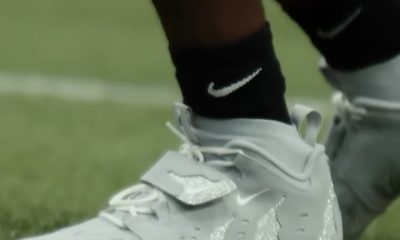
 Fashion6 days ago
Fashion6 days agoThis is poetry in motion.
-

 High School Sports1 week ago
High School Sports1 week agoAppling County football to forfeit all 10 wins from 2024
-

 Sports2 weeks ago
Sports2 weeks agoSports Roundup
-

 College Sports1 week ago
College Sports1 week agoLehigh wrestlers prepare for wrestling U.S. Open
-

 NIL2 weeks ago
NIL2 weeks agoPatriots Legend Rob Gronkowski Makes Surprising Career Move
-

 Fashion2 weeks ago
Fashion2 weeks agoWatch Saudi Arabian GP free live stream
-

 NIL7 days ago
NIL7 days agoSave Like a Pro: NIL money isn’t free cash—taxes take a bite! Set aside part of …
-

 Sports1 week ago
Sports1 week agoHow to watch Yahoo Sports' NFL Draft Live show


















